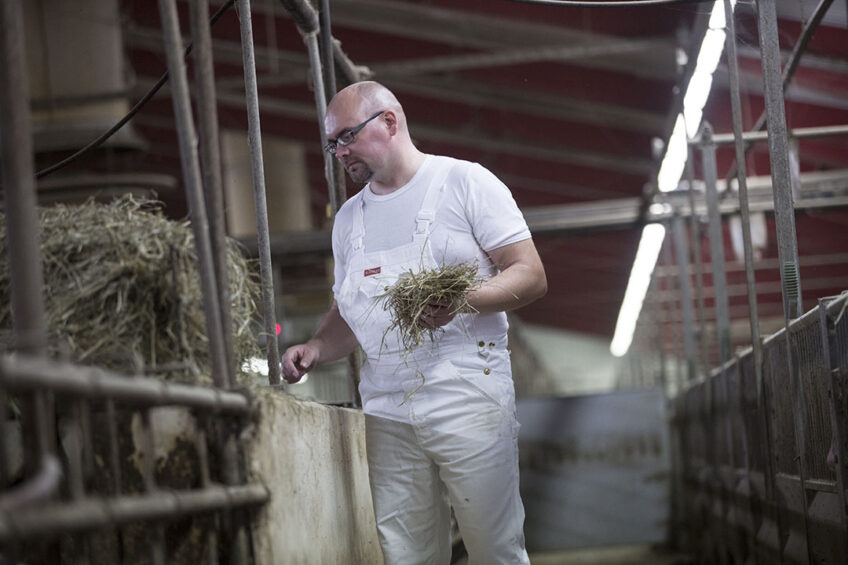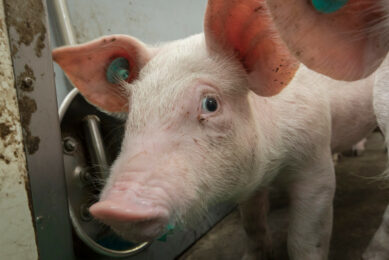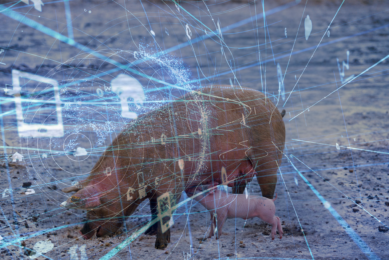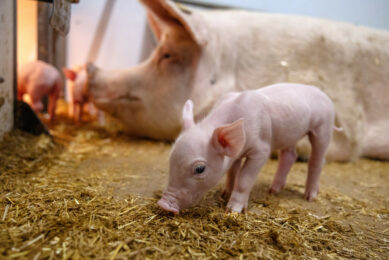Thomas Sønderby Bruun: ‘Litter gain as key focus to breed more piglets’

In just a few years’ time, Danish agricultural knowledge centre SEGES Innovation developed quite a name for itself by organising relevant pig research summits. 2 successful events about zinc oxide have prompted the organisation to set up another promising event: a summit about piglet health and nutrition. One of the keynote speakers is Thomas Sønderby Bruun – senior sow specialist at SEGES. His message: better piglets start with the sow.
The Danish capital Copenhagen will once more be the heart of the international swine business when over 400 experts on the field of piglet health and nutrition will gather for the latest event set up by the Danish research organisation SEGES Innovation. The event “Think Piglet Health & Nutrition” will take place at the Crowne Plaza Copenhagen on September 21 and 22, 2023.
Keynote speakers from all over the planet will address the audience. The event has 6 different themes:
· Pre-farrowing feeding strategies;
· Feeding for high milk production;
· Piglet immunity;
· Design of the farrowing pen;
· Management of large litters;
· Feeding of piglets before weaning.
Within that first bullet points, Thomas Sønderby Bruun will virtually kick off the conference with a keynote on pre-farrowing feeding strategies for hyperprolific sows together with associate professor Anja V. Strathe of the University of Copenhagen.
Pig Progress: We will be at a piglet summit yet the first keynote is given by a sow specialist. How much do sow management and sow feeding contribute to the issue of piglet survival?
Thomas Sønderby Bruun: “You are talking to a sow nutritionist. I would say it is a great part. If we make the sows too heavy, and put them in traditional farrowing pens, the area in the crate is getting limited. The risk of crushing increases. In the past 5 years, I have been focusing on getting the gilts served at the right time, and on controlling the weight from parity to parity. I believe that that is the key to having more efficient sows.”
What makes the theme “piglet nutrition and health” so vital? Is this related to Denmark’s hyperprolific sows and subsequent high pre-weaning mortality?
“A large litter size is often associated with increased pre-weaning mortality. In a lot of countries, stillborn piglets are also an issue. When we produce a piglet within the sow during gestation, we also want that piglet to survive. This is what I focus on.”
“We think that sow nutrition, piglet nutrition, and anything that could give some health benefits like increasing nursing capacity is interesting, because then you have more piglets staying at their own sow. So in terms of that, the fewer piglets you have to move, the less risk of spreading disease.
“You want them to be self-supporting basically. You want the sow to give birth and then make sure she can deal with all the piglets without any trouble.”
We turned everything upside down, and started looking at the first 45 days
What does your research with Dr Strathe entail?
“Our main focus is gestational and lactational sow feeding, because we want the sows to give birth to vital piglets. We also want to have quick farrowings, with a low percentage of stillborns and a low need of birth assistance. Late gestation feeding has been ben a major focus area for the late professor Peter Kappel Theil and assistant professor Takele Feyera, both from Aarhus University.
“We will be also looking into early gestation feeding of the sows. We believe that much focus lies on feeding for the last 3 or 4 weeks before farrowing, to get heavier piglets. The contact between the oocyte and the uterus happens in very early gestation and that is when the placenta is formed. So we turned everything upside down, and started looking at the first 45 days.

“I read a review by Dr Pieter Langendijk and co-authors (Trouw Nutrition) in which they also stated that they believe that mid-gestation is interesting. It confirms the need for a trial we are will do in the summer of 2023. We are going to find out whether the feeding level from around day 30 until around day 84, so mid-gestation, affects birth weight. And if it does, by how much? We will not have any results at the conference yet, but Dr Langendijk confirmed what we believe: mid-gestation is the new black.”
What technical goals within sow nutrition do you feel have the most impact on piglet survival?
“I would say the litter gain would be the best driver of getting the sow to give more milk. There is a good heritability, but you can also see the repeatability. If you have a first parity sow giving a lot of milk, it will mean a lot of weaned piglets. In the next parity however, she will do the same. So we have a repeatability in production. I have been saying for close to 10 years that litter gain could be the most important factor in getting the sows to wean more piglets. I believe litter gain is very closely correlated to the number of piglets weaned per litter. And if there is a correlation – and I would say there is one– between the number of piglets weaned per litter and the number of functional teats, then I believe choosing litter gain in the breeding goal is much more efficient than the number of teats. When I count teats on sows, I do not know if these will be efficient or not. But if you look at the milk yield of the sow, then actually, you get an extra teat that because there is milk in that extra teat.”
At Danish farms, there is 2.7-2.9 kg of litter gain on average per farm level,
What you mean by “litter gain”?
“The average daily litter gain is the amount of kg piglets weaned plus the amount of kg dead at the sow or removed. That is the produced number of kg minus the born number of kg standardised and then divided by the number of lactation days. At Danish farms, there is 2.7-2.9 kg of litter gain on average per farm level, but there are Danish farms with 3 kg, and there are Danish superfarms with 3.2 kg/day or a bit more than that: the top level.
“Within herds, there are sows that give as much as 4.8 kg of litter gain per day. Now going from litter gain to milk production: it requires 3.9 to 4 kg of milk for 1 kg of litter gain. The best sows therefore give close to 20 litres of milk on a daily basis from birth to weaning.
“This is why I believe that daily litter gain is the best target to look for. Because if you get high litter gain, you will have more efficient sows, and if you get more efficient sows, mortality will come down.”
What difference does that make for farms in general?
“I have been running many trials at 5 or 6 farms. I looked at the litter gain and the number of weaned piglets per litter. The most efficient farms are without any doubt the ones with the lightest sows. At the best performing farms, they were weaning about 1.3 or 1.2 extra piglets per litter. That is without nurse sows, going from 12.7 to close to 14.
“The weight difference on these farms was around 30 to 35 kg, when comparing a first parity sow at the best performing farms and the lowest performing farms. So I think that the perfect sow herd is about controlling the weight at first service and controlling it all the time. And that is why I am a big fan of Electronic Sow Feeding.”
There is another study you will present. What is this about?
“We have been working a lot on farrowing surveillance in Denmark. We studied 3 herds looking at surveillance at different times of the night. We found a reduction of 28.5% of the number of stillborns in the first herd, just by being there when the sows are farrowing.
“On the first farm we conducted this trial, the farm manager and an employee were there 3 times, 10 hours per week (18:00-04:00) to keep the number of stillborns as low as possible. My study stopped with registering liveborns and stillborns, but they say they can see every second week that the number of weakborns in the morning was lower. Because all light newborn piglets were put in the corner or at the sow udder, instead of walking around at the pen not knowing what to do. So they said that mortality every second week for the small ones were lower.
“So farrowing assistance I believe is also a tool. But the problem is, you have to have a big herd to have enough farrowings to pay for this.”
As an “ambassador” of the Think Piglet Health & Nutrition event, what are your expectations?
“I hope that we can share our knowledge with the rest of the world and the rest of the world can share their knowledge within this area of piglet survival and piglet gain and so on. It is not like, some other congresses, very broad in their focus areas. This is more narrow. I hope we can dive deeper into the single issues.”
What would cause you to feel satisfied after the event?
“For SEGES Innovation of course a lot of attendees and a lot of good discussions would be the goal. For me personally, I hope I will meet and connect with new, interesting people. I hope to connect with some young upcoming stars in the research world. Because some research coming from other research groups are new people within established research groups, and I think connecting with these means: new brains meet, new ideas arrive.”
It is still possible to register for the summit “Think Piglet Health & Nutrition” on September 21-22 in Copenhagen, Denmark. An early-bird rate applies until June 20, 2023. Read more about the summit here.











